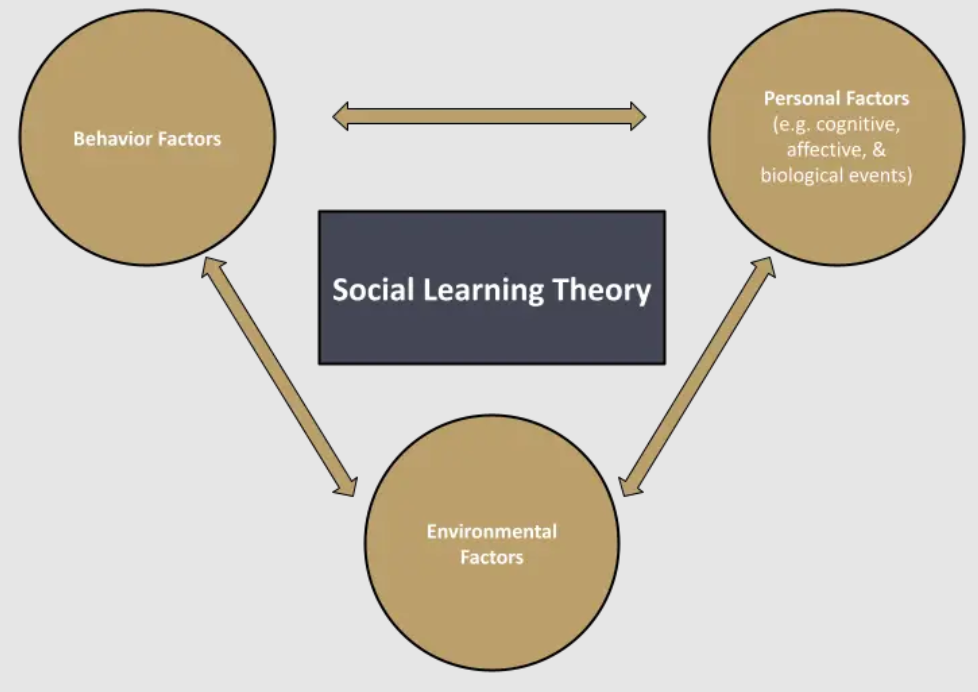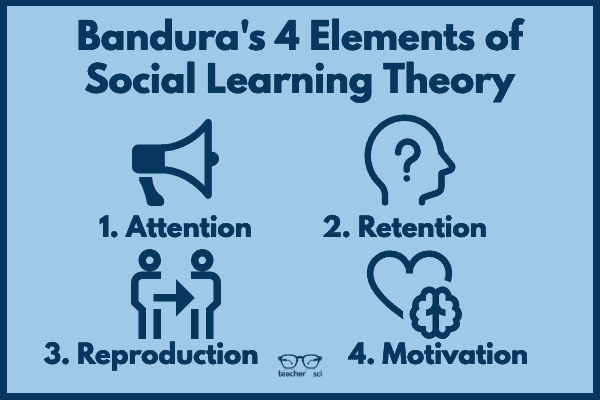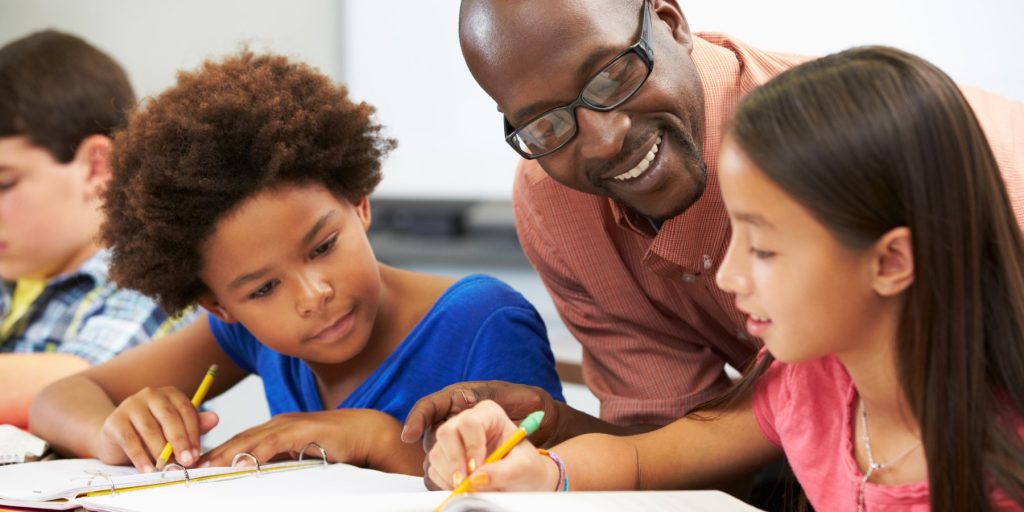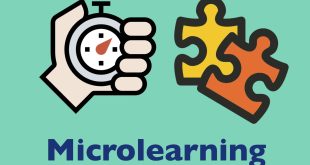Think about this for a minute; how did you learn to ride a bike when you were little? Learned to make a sandwich? Or learned to write your own name? The answer to these questions would probably be that you learned these things from someone else – most likely from someone who is older than you. Over the years, lots of scientists and experts have attempted to delve into the human brain to understand how we actually learn things. In the thirties, Piaget developed his theory of cognitive development to analyze how children learn. In the fifties, Bloom believed that people learn through a 6-step taxonomy that increases in difficulty. In the sixties, Gagné proposed 5 conditions that happen during the learning process. In the seventies, Albert Bandura suggested that humans learn behavior through what is known as the social learning theory. So what is social learning theory? Let’s find out!
Table of Contents
What is the main idea of Social Learning Theory?
One of the most special characteristics of human beings is their ability to think about how they think. Isn’t it interesting how we are capable of exploring our own brains to learn about our own learning process?
Albert Bandura believed that humans learn behavior by observing and modeling others’ behaviors and actions. He states in his book:
“The extraordinary capacity of humans to use symbols enables them to represent events, to analyze their conscious experience, to communicate with others at any distance in time and space, to plan, to create, to imagine, and to engage in foresightful action.”

Examples of Social Learning Theory
Over the years, several experiments were conducted to attempt to prove the social learning theory by Albert Bandura.
The Bobo doll experiment
The Bobo doll experiment is the most famous study that proved the soundness of Albert Bandura’s theory. Bandura wanted to examine children, in particular, to prove that they learn behavior by observing adults.

The team of researchers started the experiment by abusing an inflatable doll in the presence of a few children from Stanford’s nursery school. They made sure to abuse the doll both physically and verbally; after the team left the children on their own, the children started repeating the same behavior on the doll.
The Bobo doll experiment is a perfect example of the “mimicking” aspect of the social learning theory. Nowadays, people use it as an example to explain how violent video games have the same effect on children. Take a look at the following video to understand more about the experiment.
Examples of Social Learning Theory in everyday life
You might be surprised to learn that social learning theory is everywhere around us! The ancient proverb says “Give a man a fish, and you feed him for a day. teach a man to fish, and you feed him for a lifetime. It’s interesting to know how the origins of this proverb are still unknown to this day. Perhaps this proves that the social learning theory is a universal concept that is unrestricted by different languages and countries … who knows?
Some examples of social learning theory in everyday life include:
- Youtube tutorials for food recipes, DIY home maintenance, language learning, etc.
- Trends on social media like TikTok dances, AI art generators and the Don’t Rush challenge.
- Trainees and new employees in the workplace mimic older employees

Principles of Social Learning Theory
So what exactly happens? What’s the science behind this theory? What are the principles of social learning theory? Albert Bandura maintains that the main principle of social learning theory is the concept of observation. He believes that we learn primarily by observing others and modeling their actions. This is done through 4 processes: attention, retention, reproduction, and motivation.
According to Bandura, “Learning would be exceedingly laborious, not to mention hazardous, if people had to rely solely on the effects of their own actions to inform them what to do.”
That’s why the ideas of observation and modeling act as a guide for people and dictate their actions. We tend to observe others doing a certain action and we mimic them to avoid mistakes, hazards, etc.
-
Attention
Bandura asserts that if a person does not pay attention to and precisely recognize the key characteristics of the modeled behavior, they will not be able to learn much through observation. That’s why we should observe others quite well if we want to learn something new. There are several factors that determine the amount of observation of another person like the observer’s characteristics or features,

A number of factors, some involving the observers’ characteristics, others involving the features of the modeled activities themselves, and still others involving the structural arrangement of human interactions, regulate the amount and types of observational experiences.
Other determinants of the process of attention are “associational patterns.” So we tend to pay attention more to the ones we regularly associate with: family members, friends, teachers, etc.
Bandura also believes that we tend to pay more attention to those who have “interpersonal attraction” or those with more appealing qualities. The opposite is true as well; we tend to ignore or reject those with less appealing characteristics.
-
Retention
The second process that happens when someone is being influenced by others is retention, or remembering the activities that have been modeled. For observers to actually benefit from another person’s activities, they have to remember the actions to be able to repeat them later on when the influencer is not present.
Bandura reveals that observational learning theory is based on verbal and imaginal systems. This means that we usually learn better through hearing and seeing activities.
Similarly, mere reference to an activity that has been repeatedly observed (e.g., driving an automobile) usually arouses its imaginal counterpart. Visual imagery plays an especially important role in observational learning during early periods of development when verbal skills are lacking, as well as in learning behavior patterns that do not lend themselves readily to verbal coding.
The same thing applies to the verbal aspect; if we learn the route to a certain place, we can later recall the information by describing it in a series of right and left turns.
Another factor that enhances the retention or the recollection of memory is “rehearsal” which is quite effective as well. Bandura believes that “When people mentally rehearse or actually perform modeled response patterns, they are less likely to forget them than if they neither think about them nor practice what they have seen.”
-
Reproduction
The third process of modeling is reproduction; this happens when we transform “symbolic representations” into actions. In other words, this is the stage when we are able to perform an action based on another person’s demo.
Behavioral reproduction is achieved by organizing one’s responses spatially and temporally in accordance with the modeled patterns.
According to Bandura, people do not acquire skills by observation only. Skills also cannot be acquired by trial and error. He gives the example of golf and how the instructor cannot expect a group of beginners to learn by giving them golf balls and waiting for them to make a move.
In most everyday learning, people usually achieve a close approximation of the new behavior by modeling, and they refine it through self-corrective adjustments on the basis of informative feedback from performance and from focused demonstrations of segments that have been only partially learned.
This might interest you: Modern Methods Of Teaching That Make An Awesome Classroom
-
Motivation
This comes as no shock; people are more likely to start modeling others when they feel like the results would be rewarding or fulfilling. This proves that one does not model everything he/she learns.
People have the tendency to observe actions and their consequences before they decide if these actions are worth modeling or not. Also, people like to observe their own behavior before they try to repeat it in the future. They like to repeat what they found agreeable, positive or self-satisfying and they avoid what they previously found negative or unworthy.

What does the Social Learning Theory say about language acquisition?
You must have wondered about how we learn a language and how this connects to Bandura’s theory. He believes that
During initial language learning, children usually convert adult speech to simpler grammars. They can acquire linguistic rules without engaging in any motor speech. In addition, it has been claimed that children’s imitations are no more advanced linguistically than are their nonimitative spontaneous utterances.
Imitation, it is therefore argued, cannot produce new grammatical forms. Nor is reinforcement believed to play a significant role in grammatical learning, since adults are more inclined to approve the factual accuracy than the grammatical correctness of children’s utterances. And finally, language is acquired too rapidly to occur by tuition.

The importance of Social Learning Theory – Why should teachers care?
Let’s take a closer look at the importance of social learning theory to understand why teachers like to use it in their classrooms.
Benefits of Social Learning Theory in the classroom
Teachers will definitely find the social learning theory an attractive option in their day-to-day lessons. One of the reasons why several teachers prefer social learning theory in the classroom is its adaptability in today’s classrooms. Because social learning theory is multifaceted, it proves that learning is not “one size fits all” for students.
Instead, it includes observation, modeling, reproduction, and more. This confirms the idea that social learning theory can be tweaked and adapted to suit different learners’ needs.
Another reason why teachers like the social learning theory is how easily they can implement it in the classroom. As we mentioned earlier, social learning theory can be found in almost all aspects of life; it’s what motivates us to learn and observe the world around us.
Therefore, it is no surprise to learn that the exact theory can be easily applied in today’s classrooms. Teachers have also found that applying social learning theory in the classroom is quite effective as it increases student motivation and interaction during lessons.
Ever heard about cognitive theories of learning?
How to apply Social Learning Theory in education?
-
Linking social learning with games
A great way to apply social learning in the classroom is through game-based learning. This can help transform the energy of the classroom to make it more fun and beneficial for students. You can introduce badges or rewards to spice up the activities as well!

-
Learning from one another
Ever heard of collaborative learning? This is basically a teaching strategy that places students at the center of the learning process. It is based on students learning from each other. What a great way to test social learning theory in the classroom! You’ll notice that students will gradually become co-dependent, help each other and work in teams.
It can also certainly improve their communication skills and enhance their confidence. What is great about this technique is that it works for almost all subjects – English, math, history, biology, you name it.
Read more: What is a flipped classroom?
Whether it was the first time you heard about social learning theory or you’re already familiar with the concept, it is about time you start testing it with your students. Social learning theory is all about how we learn from each other; that’s why it would be great for you to sit down with your fellow co-teachers, brainstorm social learning ideas and start working!
Skolera Learning Management System (LMS) makes it easier for teachers to freely experiment with their diverse learning methods and techniques using its intuitive dashboard.
Learn more about Skolera’s LMS features for teachers.
Sources:
 Skolera LMS Blog Educational Technology Articles and News
Skolera LMS Blog Educational Technology Articles and News




